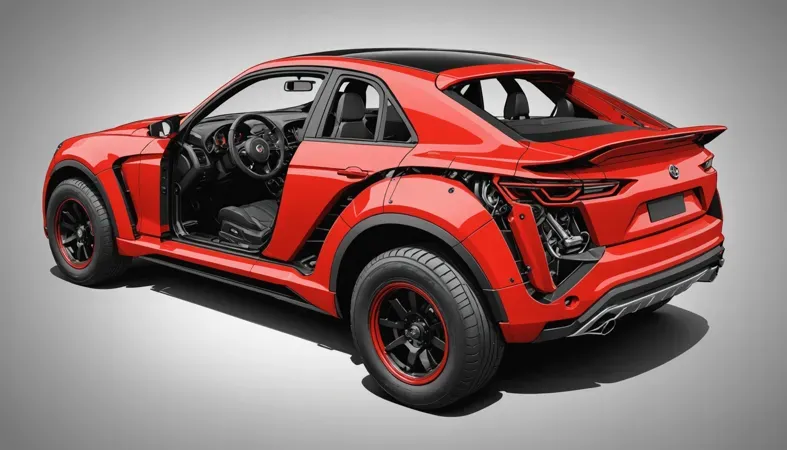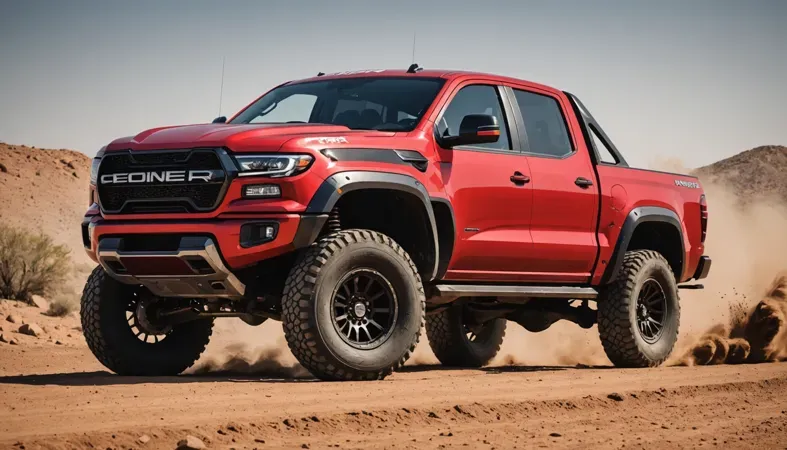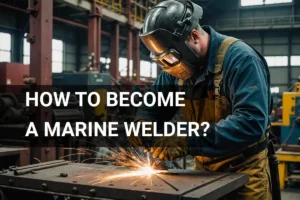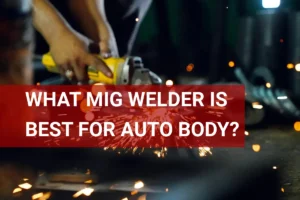What Does a Welded Diff Do? Differential Locking, Performance, Installation
Published on: March 30, 2025 | Last modified: March 4, 2025
By: Joe Carter
A differential is a key component in your vehicle’s drivetrain. It allows your wheels to turn at different speeds while going around corners.
Many people are curious about what does a welded diff do. A welded differential locks both wheels on an axle, making them spin together. This is super important for off-roading and racing since it enhances traction and stability.
In this guide, I’ll cover what is a welded diff, how it works, the different types of differentials, essential steps to weld one, factors that affect its performance, and frequently asked questions. You’ll find out everything you need, from what does a welded diff look like to how to weld a diff, so you can better understand this handy upgrade.
Contents
What is a Welded Diff?
A welded differential locks both wheels of an axle together. This boosts traction and control, especially in off-road setups. It’s popular in racing, drift cars, and rock crawlers for improved performance on slippery surfaces.
How Does a Welded Diff Work?
A welded differential (Diff) is a device used in automobiles. It locks both wheels on an axle together, making them spin at the same rate. If one wheel spins, the other does too. This setup is common in vehicles needing extra traction, like off-road or drifting cars. Many enthusiasts seek this for better control during tight turns.
When you weld a diff, you’re fusing the gears inside the differential. Normally, the differential allows wheels to spin at different rates while turning, which helps maintain traction. With a welded diff, both sides receive force equally. This provides more grip but makes sharp turns more difficult.
I recommend a welded diff if you’re into drifting or off-roading. It enhances control and stability in those conditions but isn’t ideal for everyday driving. Those who want a smooth ride should consider the downsides, like tire wear and handling issues. Overall, understanding what a welded diff does can significantly impact your choice for your vehicle.
Types Of Differentials
So, what are the types of differentials?
-
Open Differentials
An open differential allows wheels to rotate at different speeds. If one wheel spins faster, it loses power, which means one wheel remains weak while the others spin freely.
-
Limited Slip Differentials
A limited slip differential balances power between both wheels, even when one slips. A welded differential, however, locks the two wheels together, delivering equal power constantly.
-
Torsen Differentials
Torsen differentials use gears for smooth power transfer and adjust for wheel speed variations. A welded differential locks the wheels in place, ensuring they turn together without slipping.
-
Locking Differentials
Locking differentials can be locked or unlocked as needed and excel in tough terrain. A welded differential keeps the wheels locked, ensuring constant traction.
-
Welded Differentials
A welded differential involves welding the two axle shafts together, ensuring both wheels turn at the same speed for maximum grip. This requires disassembling the differential, applying heat to join the gears, and securing everything. While perfect for drifting, it may be impractical on public roads. Proper eye protection is crucial for such tasks, so it’s important to know how to adjust welding helmets effectively.
We’ve wrapped up the various types of differentials here. Next up, we’ll look at the process of welding a differential.

Steps to Weld a Differential
Here are the steps to modify your differential for improved traction.
-
Prepare the Differential Case
Start by securing the differential case in a sturdy vise or on a workbench. Make sure it’s clean and free from debris. This’ll save you headaches later. For most cars, standard differential cases require a torque of around 45-65 Nm (33-48 Lb-ft) to remove bolts, so don’t underestimate the strength needed.
Check for rust or damage, as this can affect weld quality. I once skipped this step and regretted it when the weld failed. Inspect or clean before moving on!
-
Remove the Carrier and Gears
Next, remove the carrier from the case using a torque wrench. You’ll often encounter shims that should be kept organized. Losing shims can lead to improper fitting later, so label them if necessary. This step typically involves removing about 6-10 bolts that hold the carrier in place.
Once removed, detach the spider gears inside the carrier. Use a hammer cautiously if they’re stuck. A gentle nudge is better than brute force—trust me, I’ve learned the hard way!
-
Clean the Weld Area
Use a wire brush or grinder to clean the areas on the spider gears where you’ll be welding. The surface must be free of grease and rust; otherwise, the weld won’t hold. Aim for a shiny, contaminant-free surface. You want strong welds, right?
Mastering welding positions significantly enhances weld strength and integrity. Learn more about welding positions 1F to 4F to improve your technique.
I recommend using acetone to remove any leftover oils or contaminants after grinding. It’s a simple but crucial step for a good bond!
-
Weld the Spider Gears Together
Now for the critical part—welding. Position the spider gears for easy access. I like to preheat the gears to about 93°C (200°F) to help the weld flow better. Use a MIG welder set with a wire diameter of around 0.8 mm (0.030 In) for best results. When welding, it’s important to consider the potential hazards such as skin exposure, which can lead to something akin to sunburn from welding.
Weld continuously without stopping. You want full penetration for a strong hold, usually requiring a current in the 120 to 150 amp range. Ensure each gear is properly welded, forming a single rigid piece. That’ll give you serious grip in tricky situations! Properly applying the 6010 welding technique is crucial in mastering pipe welding, which provides effective joint penetration and bonding for challenging projects. Discover more about how to weld pipe with 6010.
-
Reassemble the Differential
After welding the gears, let the weld cool and clean off any slag. Now, reinsert the carrier into the differential. When reassembling, apply a new layer of petroleum jelly to the gear contact areas.
Tighten the bolts using the same torque from removal—don’t forget that 45-65 Nm (33-48 Lb-ft)! Lastly, check the settings and give it a spin. I always do a quick test run to ensure it functions smoothly. If not, a bit of troubleshooting will save you time later!
That covers the procedures for welding a differential. Let’s now take a look at the performance comparison of welded and other differentials.
Performance Comparison: Welded Diff vs. Other Differentials
Let’s compare a welded diff to other popular types of differentials. Understanding these differences helps you choose the right setup for your needs.
| Differential Type | Traction | Turning Radius | Performance on Slippery Surfaces | Everyday Driveability |
|---|---|---|---|---|
| Welded Differential | High – Both wheels turn together | Tighter turns may be difficult | Excellent – Consistent control | Poor – Increased tire wear |
| Open Differential | Variable – Power loss in one wheel | Easy – Allows different wheel speeds | Good – Allows for smooth cornering | Excellent – Ideal for daily driving |
| Limited Slip Differential | Moderate – Balances power during slippage | Better than welded | Good – Adapts to conditions | Good – Better for regular use |
| Locking Differential | High – Can lock on demand | Better than welded when unlocked | Excellent – Best for off-road | Variable – Depends on locking state |
We’ve wrapped up the performance comparison of welded differentials and other types. Next up, we’ll look at the factors influencing welded differential performance.

Factors Affecting Welded Differential Performance
What factors influence a welded differential’s performance?
-
Surface Preparation Quality
Proper surface preparation is crucial for effective welding. Rough surfaces can create weak points, lowering overall strength by up to 30%!
-
Welding Technique
The choice of welding technique affects durability. An incorrect method, like MIG welding, can cause uneven heat distribution, leading to potential cracks.
-
Material Composition Of Gears
Using high-carbon steel for the gears is recommended. It has a tensile strength of about 750 MPa (108,000 Psi), significantly enhancing performance.
-
Heat Treatment Processes
Post-weld heat treatment can reduce residual stresses and improve toughness. Effective treatments can increase strength by 20% or more, boosting reliability.
-
Overall Vehicle Dynamics
Vehicle weight and suspension setup can affect how a welded differential behaves. A heavy vehicle may place more stress on differential components, impacting longevity and performance.
We’ve wrapped up the factors that influence welded differential performance here. Next up, we’ll look at common questions and answers.
Frequently Asked Questions (FAQs)
Now let us look at some common questions I typically get asked about welded differentials.
Is a Welded Diff Good for Drifting?
Yes, a welded diff is good for drifting. This setup provides solid engagement between the wheels, which increases traction. Many drifters prefer it for predictable control, allowing for sharper turns and better drift angles in tight corners.
What Happens if You Weld a Differential?
When you weld a differential, you permanently connect the two driveshafts. This means both wheels spin together, enhancing traction. However, it can create handling issues on the street, like difficulty turning and quicker tire wear. Proper technique is essential when performing welds, especially for configurations like an edge weld joint.
Do You Need a Welded Diff to Do Donuts?
No, you don’t need a welded diff to do donuts. While a welded diff helps maintain traction during spins, cars with limited-slip differentials can also perform well. Proper throttle control and rear-wheel drive are key to executing smooth donuts.
How to Tell if a Differential is Welded?
To tell if a differential is welded, check for tire spin patterns. If both rear tires spin together during a turn on a pavement surface, it’s likely welded. Listening for unusual grinding noises during cornering is another sign of a welded differential.
What Does a Welded Diff Look Like?
A welded diff looks like a standard differential, but the internal gears are fused together. This means fewer moving parts and a reinforced housing. If you inspect one, you’ll notice it doesn’t allow for independent wheel rotation.
Do Welded Diffs Affect Fuel Efficiency?
Yes, welded diffs can negatively impact fuel efficiency. Since both wheels spin together, it creates more resistance during cornering. This added friction can lead to increased fuel consumption, particularly in urban driving situations.
Conclusion
I hope this gave you what you needed. We covered what a welded diff is, how it works, different types of differentials, steps to weld a differential, and factors affecting its performance. Additionally, we answered some frequently asked questions.
I trust these insights have been helpful. In simple terms, a welded differential locks the wheels together, allowing them to spin at the same speed. This is great for traction but can affect handling in tight turns, especially in a vehicle with a RA (Rear Axle) ratio of 3.5:1 or higher, meaning that both wheels will turn at the same rate under acceleration.
For more information on the welding process and its applications, feel free to visit What is Welding.
References
- Lincoln Electric. (2020). The Procedure Handbook of Arc Welding (15th ed.). Cleveland, OH: Lincoln Electric Company.
- American Society of Mechanical Engineers. (2019). ASME Section IX: Welding and Brazing Qualifications. New York, NY: ASME.
- Little, R. L. (1999). Welding and Welding Technology. New York, NY: McGraw-Hill Education.
Joe Carter is a retired welding professional with over 40 years of hands-on experience in the industry, spanning ship repair, structural welding, and even underwater projects. Joe is a master of MIG, TIG, and Stick welding. Passionate about mentoring the next generation of welders, Joe now shares his decades of expertise and practical insights to help others build rewarding careers in welding.
Automotive Mechanics, Installation Guide, MIG Welding, Off-roading, Pipe Welding, Racing, Surface Preparation, Vehicle Performance, Welded Differential, Welding, Wire Diameter







